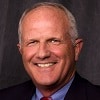
Kent Gale, Founder and Chairman, KLAS Enterprises
In the competition show American Idol, the winner is based on votes — what if a similar method was used to measure individual vendor connectivity? On the long-running reality show, when a song is finished, the TV screen flashes a message: “It is time to vote!” And the selection of the next American Idol commences.
For provider organizations, connecting to outside EMRs is a part of their everyday life, and the October Interoperability 2015 study gave them a chance to vote on the easiest and most difficult vendors to connect with when sharing outside patient data. Of course, interoperability would be more amusing if it were a talent contest with little impact on patient care. However, putting the right information in clinicians’ hands in the best format and at the most appropriate time to help diagnose and care for patients is serious business. This blog shares how the votes stacked up by EMR vendor.
More than 240 healthcare organizations gave their candid perspective by responding to the question, “Which EMR vendors are easiest/most difficult to connect to when exchanging data outside of your organization?” Participants could choose more than one EMR vendor in either scenario, and that was not uncommon. Unlike the votes for the American Idol, the EMR vendor votes typically came with much commentary where providers gave reasons for the selections. “Epic-to-Epic interfacing is a piece of cake,” says one large university health system. That is no surprise, since the connections of organizations on Epic’s EMR to other provider organizations using Epic were voted by far the easiest outside connections — but that is interesting mostly if you are an Epic client.
Connection to a foreign EMR is where the rubber meets the road. athenahealth is the overall provider favorite when looking at the ratio of Easiest to Most Difficult votes, summarized well by one study participant, who note: “What matters most right now is seeing vendors be committed to achieving interoperability. I would say that athenahealth is the most committed to it.” Participants saw athenahealth as the company that says, “We can if” rather than, “We cannot because…”
Cerner stood out as the other EMR vendor whose “easiest to connect with” votes significantly outnumbered their “most difficult to connect with” votes. As this provider explains, “Cerner is relatively easy to work with when it comes to exchanging data because they can throw CCDs around pretty easily.”
The rest of the EMR vendors were near the middle, where the positive and negative votes kind of canceled each other out. Allscripts ended up slightly on the positive side of the ledger, while GE, Greenway, McKesson, Meditech, and NextGen Healthcare fell on the negative side. The exception was eClinicalWorks. Providers reported eClinicalWorks to be the most challenging vendor to exchange patient records with, as highlighted in this provider comment: “eClinicalWorks needs to make some real progress now. It feels like every connection we want to make is a custom connection.”
Not every participating organization could articulate specific EMR vendors that were easier or more difficult to work with; a majority, however, did have an opinion. When the 237 individual votes were counted, athenahealth was tagged the new American Idol – I mean, the easiest EMR vendor to share data with! Their example is worth emulating.
Next week, we’ll look at who the providers voted as the most effective EMR vendors to connect with.
[Kent Gale is Founder and Chairman of KLAS Enterprises. For more information about KLAS, click here. To follow KLAS on Twitter, click here.]


Share Your Thoughts
You must be logged in to post a comment.